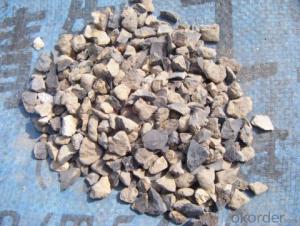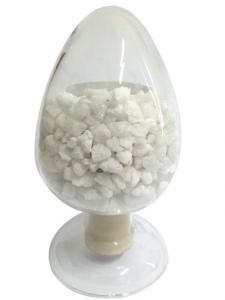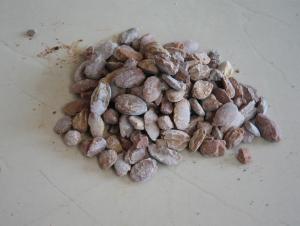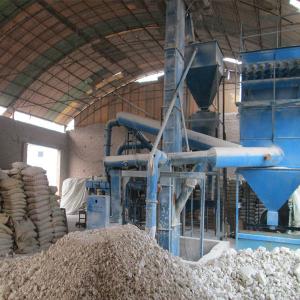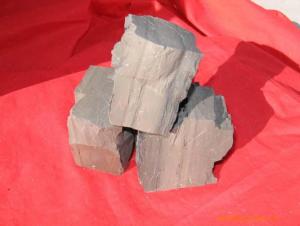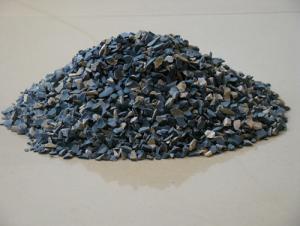Al2O3 80% Rotary Kiln Calcined Bauxite for High-Alumina Cement
- Loading Port:
- China main port
- Payment Terms:
- TT OR LC
- Min Order Qty:
- 25 m.t.
- Supply Capability:
- 2000 m.t./month
OKorder Service Pledge
OKorder Financial Service
You Might Also Like
Quick Details
| Place of Origin: | Shanxi, China (Mainland) | Shape: | Powder | Material: | Bauxite Ore |
| SiO2 Content (%): | 12%max | Al2O3 Content (%): | 80% min | MgO Content (%): | 0.25% max |
| CaO Content (%): | 0.25%max | Refractoriness (Degree): | 1770°< Refractoriness< 2000° | CrO Content (%): | -- |
| SiC Content (%): | -- | Model Number: | JTRTB-80 | Brand Name: | CNBM |
| Color: | Pale yellow and dark grey | Fe2O3: | 2.5% max | TIO2: | 4% max |
| R2O: | 0.3% max | Moisture Absorption: | 3% max | Bulk Density: | 2.80g/cm3 |
Packaging & Delivery
| Packaging Details: | Packing in 25kg PP bag,, 1mt /1.25mt bulk bags |
| Delivery Detail: | Within 15 days againsht the signed contract. |
Product Description
Bauxite is earthy mineral which consists mainly of Al2O3 , a kind of hydrated alumina containing impurities. According to the usage, It can be divided into the levels of Metallurgy, chemical industry, grinding, cement, and refractory. Clinker is pale yellow and dark grey. It is mainly used for high aluminum refractory material, and also can be used to make the fused corundum. Our materials of calcined bauxite is mainly D-K Style Bauxite Ore. Our specification is as follows,
AL2O3 80%min
Fe2O3 2.5%max
TiO2 4%max
CaO+MgO 0.4%max
R2O 0.3%max
Moisture Absorption 3% max
Bulk Density 2.8g/cm3 min

- Q:What's the maximum temperature that the refractory ceramic fiber cloth can endure?
- It depends on the composition of the ceramic material. If its composition is alumina and it is used by civilians, its normal use temperature is 1200℃; if its composition is alumina but it is for millitary use, it can endure the highest temperature of 2200℃.
- Q:What kind of refractory bricks material is best?
- 1, high alumina brick: The content of Al2O3 is more than 75. The refractoriness is higher than the clay brick. It has good resistance to acid, alkali and erosion and is suitable for cement kiln calcining zone and other places. It has long operation life, but the price is high. 2. dolomite?brick: Formation of coating has good performance, good corrosion resistance, but f-CaO is contained in bricks. It is hydratable and difficult to transport and keep, so it is less used in the production. 3. magnesia-chrome bricks: It has good formation of coating and is used for burning zone. The disadvantage is poor thermal shock resistant performance. Besides, positive Hexavalent Cr is highly toxic. Countries that produce and use magnesia-chrome bricks gradually decrease on the international. Now production units using this brick should find alternatives as soon as possible. 4. spinel brick: It is often used in transitional zone and has good seismic performance, good reduction resistance, but refractoriness is a little bit poor. 5. anti-stripping brick: This brick contains a small amount of ZrO. Martensite phase transformation happens to form thin crack during temperature-rise period. It has strong alkali?resistance, anti-stripping performance and good slag resistance. 6. phosphate brick: It has low refractoriness, but it has strong strength and good shock resistance. It is often used in grate?cooler, hot kiln hood, etc. 7. carborundum brick: It has high temperature resistance(1800 degree, softening temperature under a fixed load is 1620-1640), small coefficient of thermal expansion, high cold-resistance heat-resistance, abrasion resistance. It is suitable for cooling zone and kilneye. 8. silmo brick: It has good thermal shock resistance, high strength, good abrasion resistance, and is suitable for transitional belt.
- Q:The primary problem, does the gas permeable brick is fired refractory bricks(refractory) ?
- Yes. After moulding by casting in the firing of 1450 ° degrees.
- Q:What types does refractory floor include?
- There are many types refractory bricks, including silicon aluminum refractory brick, the leading product in refractory bricks. And its high temperature resistance can reach up to 600 degree centigrade or more, so it is an excellent refractory brick. And this high-alumina refractory brick is very suitable for metal industry for its strong practicability. Another one is alkaline series refractory brick, including magnesite refractory brick, and these two bricks are good materials resistant to high temperature.
- Q:What are grades of refractory materials?
- Refractories have lots of varieties which all have different purposes.1 divided according to the level of refractoriness: ordinary refractory materials: 1580 ℃ to 1770 ℃, advanced refractories: 1770 ℃ to 2000 ℃ and super refractories: above 2000 ℃ 2, divided in accordance with shapes and sizes : Standard ones: 230mm × 113mm × 65mm, no more than four ruler.
- Q:Can you tell me the classification of fireproof sealing material.
- Fire blocking is to use fire blocking material as partition between cable threading hole and electric hole. Its role is to prevent the cable itself catacausis or outside naked light make the fire spread to achieve the purpose of protecting the safety of personnel and equipment. The principle of fire-proof sealing is plugging material acting as bloating heat absorption and heat insulation. Fireproof sealing material in current market include: fire-proof sealing plate, foam sealing materials, flame retardant module, flexible organic plugging material, inorganic fire sealant, plugging and fire package, etc. The wide usage of fire-proof sealing material in building construction can ensure the fire flame and high temperature flue gas not to extend another fire partition tendril.
- Q:Is there anyone who can explain how to grade the level of fire insulation board?
- 1, Combustion performance of building material is divided into the following several class according to China's national standard GB8624-97 Class a: Non combustible building materials: Non-conbustible material. Class B1: Refractory building materials: Flame retardant materials have good flame retardant effect. It hardly catch on fire in the case of open flame and high temperature, do not spread fire quickly, and when the fire source is removed, fire will be stopped immediately. Class B2: Combustible building materials: Combustible materials have certain flame retardant effect. In case of fire or under high temperature, it will immediately burst into flames, easily leading to spread of fire , such as poles, wooden frame, timber, and wood stairs. Class B3: Combustible building materials: Without any flame retardant effect, will be burnt easily, resulting in high risk of fire. I Hope my answer will help you.
- Q:How to distinguish the fire resistant level of construction materials?
- Division of fire resistant level of building material: 1, It can be divided into five levels according to the importance: a, special class: commerative, historic, international and national buildings. b, Class A: high-grade residential architecture and public building. c, class B: middle-grade residential architecture and public building. d, class C: orinary residential architecture and public building. 2, It can be divided into four grades according to fireproof?performance: Fire resistance level buildings is divided into four levels. Standard of fire resistant level is based on the combustion performance and fire endurance of main components of the house. 3, It can be divided into 4 levels according to durable life: a, A grade durable life, over 100 years, for important buildings and high-rise buildings. b, second level durable life, from 50 to 100 years, for ordinary buildings. c, third level durable life, from 25 to 50 years, for secondary buildings. D, fourth level durable life, less than15 years , for temporary buildings. I hope my answers will help you.
- Q:How many kinds of fireproof materials are there in the market?
- A-level materials are the best which will not burn while the B-level materials are made of combustible materials which can burst into flames.
1. Manufacturer Overview |
|
|---|---|
| Location | |
| Year Established | |
| Annual Output Value | |
| Main Markets | |
| Company Certifications | |
2. Manufacturer Certificates |
|
|---|---|
| a) Certification Name | |
| Range | |
| Reference | |
| Validity Period | |
3. Manufacturer Capability |
|
|---|---|
| a)Trade Capacity | |
| Nearest Port | |
| Export Percentage | |
| No.of Employees in Trade Department | |
| Language Spoken: | |
| b)Factory Information | |
| Factory Size: | |
| No. of Production Lines | |
| Contract Manufacturing | |
| Product Price Range | |
Send your message to us
Al2O3 80% Rotary Kiln Calcined Bauxite for High-Alumina Cement
- Loading Port:
- China main port
- Payment Terms:
- TT OR LC
- Min Order Qty:
- 25 m.t.
- Supply Capability:
- 2000 m.t./month
OKorder Service Pledge
OKorder Financial Service
Similar products
New products
Hot products
Related keywords
